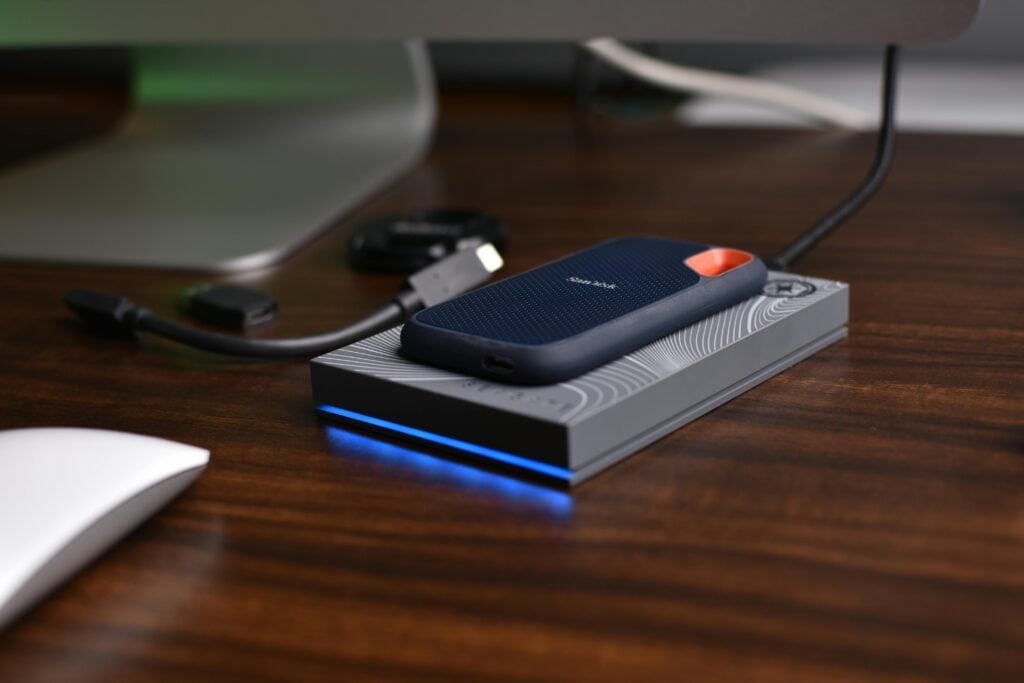Disclosure: Some links below are affiliate links. We may earn a commission at no extra cost to you.
iDrive vs CrashPlan is the decision most remote workers face when they finally set up cloud backup. This guide gives a clear recommendation based on how you actually work, then shows the simple steps to get reliable protection and predictable restores.

TL;DR
- Choose iDrive if you want one account for several devices, snapshots, and coverage for external drives or a NAS.
- Choose CrashPlan if you prefer simple per-device protection with a clear restore flow and you primarily use one or two computers.
Quick Picks
Why this comparison matters
If you work remotely, your laptop is your business. A failure, theft, or ransomware event can halt projects and damage client trust. Online backup turns a disaster into an inconvenience. The right choice depends on device count, restore needs, version history, support for external drives or a NAS, and the real cost over a full year. Throughout this iDrive vs CrashPlan review we focus on practical scenarios, not hype.
iDrive vs CrashPlan: Ease of setup and daily use
iDrive gives you structured control. You can add multiple computers under one login, create backup sets, schedule jobs, and include external drives. It takes a few extra minutes on day one, then it runs quietly with clear reporting.
CrashPlan feels straightforward per device. Install, sign in, choose important folders, and let it run. If you dislike cross-device settings and just want your laptop safe, this model is easy to keep healthy.
Advice: pick the level of control you will actually maintain. In the context of iDrive vs CrashPlan, simple and consistent beats complex and neglected.
What gets backed up
iDrive supports several computers under one account and can include external drives and many NAS setups. If you keep project archives on an external SSD or you maintain a small NAS, this helps everything live under one roof with consistent status reports.
CrashPlan treats each computer as its own protected unit. That keeps things clear when your main goal is to make a single laptop safe without cross-device policies.

Bottom line: several devices or archives point to iDrive. One or two computers without many peripherals point to CrashPlan.
Performance on real networks
The first backup is always the slowest because everything must upload. After that, both tools send only changes. You can throttle bandwidth during work hours so calls and uploads do not fight for the same connection. On hotel or café Wi-Fi, set a daytime limit and let large uploads complete overnight. Both clients resume after interruptions, which matters if your network drops.
Setup tip: leave your laptop plugged in and awake overnight for the initial backup. If you plan to include an external drive, connect it during that first full run.
Restores when things go wrong
Restores are the reason you pay for backup. Both tools support selective restores via the app or the web. For large jobs on slow connections, shipped-drive options on certain plans can save days. A good restore process lets you pull the one folder you need right now, start working, and let the rest finish in the background. For most buyers comparing iDrive vs CrashPlan, restore clarity and speed decide the choice.

Five-minute test to run today: pick a real client folder, restore it to a temporary location, open the files, and time the process. Fix confusion now, not during a crisis.
Version history and snapshots
Version history protects you from bad edits, sync mistakes, and ransomware. iDrive exposes snapshots with flexible retention so you can roll back to earlier states. CrashPlan offers robust versioning on business plans with sensible defaults. If you edit files daily, choose settings that keep enough history to roll back at least a week.
Privacy and security basics
Both providers encrypt data in transit and at rest. Use a strong password in a password manager and enable two-factor authentication. If you enable private encryption keys where available, store the key safely in your password manager and keep a secure offline copy. Lose the key and no one can recover your data.
If you handle sensitive client files, consider pairing your backup with zero-knowledge cloud storage for finished deliverables. Backup is for recovery. Storage and archives are for retention and sharing.
Operating systems, resource use, and scheduling
Both support current Windows and macOS versions and offer mobile apps for browsing and restoring. After the initial full backup, CPU and memory impact is modest. Throttle during the day if you share bandwidth and remove limits overnight. If you also back up a desktop or a NAS at home, schedule those jobs for off-hours so everything completes without competition.
iDrive vs CrashPlan: Pricing and 12-month cost
Promos change. Renewal pricing matters more. Use this quick worksheet for an honest comparison of iDrive vs CrashPlan:
- How many computers need protection over the next year?
- Will you include external drives or a NAS?
- How much version history do you need for frequently edited files?
- What is the renewal total for twelve months on each service, including any add-ons?
Typical outcome:
- If you protect several devices and archives under one login, iDrive is often simpler and cheaper overall.
- If you want clear per-device protection with minimal cross-device complexity, CrashPlan fits well.
Use-case playbooks
Solo freelancer, one laptop
Goal: minimal maintenance, quick recovery.
- Choose CrashPlan.
- Install, select core folders, enable two-factor authentication.
- Set a modest daytime bandwidth cap and remove limits overnight.
- Run a test restore this week.
- Monthly: confirm last backup time and size.
Consultant with two laptops and an external SSD
Goal: one account covers everything, snapshots for safety.
- Choose iDrive.
- Add both laptops under the same login.
- Create sets for Documents, Desktop, and the project SSD.
- Schedule laptop backups daily and the SSD weekly.
- Quarterly: verify snapshot restore on a frequently changed file.
Creator with a home NAS
Goal: fast laptop restores plus off-site copies of the NAS.
- Choose iDrive and use the supported method for your NAS model.
- Back up the laptop daily and the NAS in a scheduled window.
- Document restore steps for both so recovery is predictable.
The 3-2-1 method that just works
- 3 copies of your data
- 2 types of storage (laptop and external SSD)
- 1 off-site copy (cloud backup)

Practical setup: daily laptop backup with iDrive or CrashPlan, a weekly local clone to an external SSD, and optional zero-knowledge storage for finished deliverables.
iDrive vs CrashPlan: Decision matrix
| Scenario | Choose | Why |
|---|---|---|
| One primary laptop, want the least maintenance | CrashPlan | Per-device simplicity with a clear restore flow |
| Two laptops, one external SSD to archive projects | iDrive | One login covers both devices plus the external drive |
| Laptop + home NAS for archives | iDrive | Supports many NAS setups and snapshots |
| Need longer version history and flexible snapshots | iDrive | Snapshot controls and retention options |
| Prefer to avoid cross-device settings altogether | CrashPlan | Keep it simple on each device |
| Travel often on inconsistent networks | Either | Throttle daytime bandwidth; shipped-drive options vary by plan |
In summary, iDrive vs CrashPlan comes down to multi-device control and snapshots versus per-device simplicity.
Setup checklist (finish in one sitting)
- Install the client and sign in.
- Confirm included folders and exclude caches you do not need.
- Throttle daytime bandwidth and remove limits overnight.
- Keep externals attached for the first full backup.
- Turn on two-factor authentication.
- Do a five-minute test restore now.
- Add a monthly status check and a quarterly restore test to your calendar.
Common mistakes and how to avoid them
- Never testing a restore. Always restore a real folder and open files.
- Letting laptops sleep too aggressively. Allow uploads while plugged in so backups complete.
- Assuming a disconnected drive is still covered. If your plan requires periodic attachment, plug that drive in on schedule.
- Counting on version history you did not configure. Confirm retention settings now.
- Treating backup like archive. Keep deliverables organized in storage; use backup for recovery.
iDrive vs CrashPlan: Final recommendation
If you manage several devices or want snapshots and external or NAS support under one account, choose iDrive. If you prefer simple per-device protection with an easy restore flow for one or two computers, choose CrashPlan. Either path works. The best choice is the one you will set up today and verify with a quick restore test.
iDrive vs CrashPlan — which one should most remote workers choose?
If you protect several devices or want snapshots and external or NAS coverage under one account, choose iDrive. If you prefer simple per-device protection for one or two computers with a clear restore flow, choose CrashPlan.
Will either work on hotel or café Wi-Fi?
Yes. Both can throttle bandwidth and resume after interruptions. Set a daytime upload limit and let larger jobs finish overnight.
Can I include external drives or a NAS?
iDrive supports multiple computers plus external drives and many NAS setups. CrashPlan focuses on per-device protection; check your plan for external drive handling.
How often should I test a restore?
Do a small test at setup, then quarterly. Restore a real client folder to a temporary location and open the files to confirm integrity.
Do I still need a local clone if I use cloud backup?
Yes. Keep a weekly clone on an external SSD for same-day recovery. Cloud backup covers off-site protection and version history.
What about encryption and private keys?
Both encrypt data in transit and at rest. If you enable a private key, store it in a password manager and keep a secure offline copy. If you lose the key, no one can recover your data.
How do I compare pricing fairly?
Ignore promos. Compare a 12-month renewal total for your device count, external/NAS needs, and version history.
What’s the simplest recommended setup for a solo laptop?
Use CrashPlan per device, throttle daytime bandwidth, and run a five-minute test restore. Add a weekly local clone and a monthly status check.